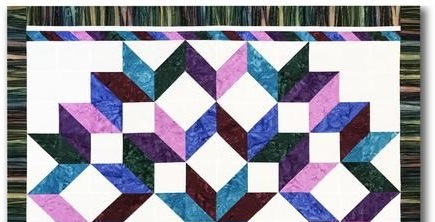2023 Winter Term Carpenters Wheel Supply List

Winter 2023 Carpenter’s Wheel Supply List
Quilting supplies are simple and yet plentiful. Listed are the essential needs for this class and a second list of tools you might find useful.
-
Sewing Machine: Any sewing machine will be fine as long as it is in good working condition. Please have a new needle in your machine and a couple to spare in case one breaks.
-
Pattern: We are using free patterns from Jordan Fabrics for our Carpenter’s Wheel. You have a choice of a bed-sized quilt or a wallhanging. Donna Jordan has a video attached to the patterns for both these quilts of how the patters are made.
A. Bedsized quilt pattern (approx 70″x 85″): https://jordanfabrics.com/pages/carpenters-wheel
B. Wallhanging pattern (approx 33″ square): https://jordanfabrics.com/pages/carpenters-wheel-pattern -
Fabric: The amount of fabric needed is printed on the patterns.
-
Cutting Mat: A cutting mat that is designed to work with a rotary cutter. A medium (16″x 24″) or large size (x 36″) works best. Small mats (12″x15″ or less) are usually too small to cut large fabrics. They work well for squaring up or sub-cutting.
-
Rotary Cutter: Have your rotary cutter loaded with a fresh blade. The best ones for this quilt use a 45mm blade. This works well for the layers of fabric we will be cutting. Smaller cutters are great for trimming and fussy cutting. Larger cutters are perfect for thicker stacks to be cut.
-
Ruler: A good basic acrylic ruler made for cutting with a rotary cutter is 6 x 18 inches. Feel free to use any other size if you already have one. Just a note: a small 1-2″x 6″ is too small to help you for this quilt.
-
Thread: It can be any thread. Some people prefer to use 100% cotton thread, but it is a myth that polyester thread will eventually cut your fabric. Check out Superior Thread’s “Therapy” for information on threads and needles (https://www.superiorthreads.com/videos-thread-therapy). Most important is a good basic neutral color that will work well with your fabric, white, off-white, gray or black. We will talk about the thread for quilting (top-stitching) your quilt in our second class.
-
Scissors: Small clipping or embroidery scissors will be needed for cutting threads as you sew. A good solid pair of large scissors is also useful.
-
Seam Ripper:Oh the joys of stitching wrong and needing to rip all that sewing out. That’s when we start doing the Frog Stitch…when we rippit rippit rippit. So much easier to use a seam ripper than a little pair of clippers. Make sure your seam ripper has that little red ball on one end. My blog explains that little red ball: pollyanna’s world: What is That Knob Thingy Doing There? (roadbabe.blogspot.com)
-
Quilting Pins: Quilting pins are longer than regular pins. Quilting pins are great for…quilting! You want to get something long and strong. A pin hold fabric together as we sew, so; we want a pin long enough and strong enough to go through layers of cloth or batting or whatever. Most quilting pins are between 1.5” and 2” in length. Clover’s quilting pins are listed as “fine” and Dritz’s are simply listed as “quilting pins.” They should be fine enough to slip through the fabric, and sturdy enough to slip through layers of fabrics and batting.
- If you have any questions please feel free to contact me:
Email: pollyanna66@comcast.net or dwerkman@pcc.edu
Text: 503-703-6404
Error: The image above does not have Alt Text
